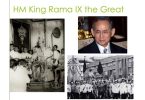The problem of unruly passengers [see IATA: Governments must close legal loopholes on unruly passengers, ETN (3/26/2014)], and hijackings, which predated the September 11, 2011 Disaster, foretold of the vulnerability of commercial aircraft to terrorist attacks [see Petersen, “Flight Attendants Train To Be On The Frontline” Conde Nast Traveler (“Today, many in the airline business acknowledge an unsettling truth: The vulnerabilities of the system exposed by the September 11 suicide hijackings were already known to anyone who looked closely at the details of the most recent rash of air-rage episodes. And only a few carriers had made any real effort to prepare their crews to handle violent passengers”)].
Pilot’s Duty To Protect Passengers
The pilots of commercial aircraft have the right and responsibility to deny boarding to and/or remove disruptive passengers [see Rubin v. United Air Lines, Inc. (“We hold a passenger whom the airline believes is, or might become, inimical to the safety of the aircraft or its passengers may be ejected from a flight without subjecting the airline to tort liability if at the time airlines personnel had a reasonable basis for believing the passenger presented a safety risk”)]. This is true even if the information upon which the pilots rely is less than accurate [see Ruta v. Delta Airlines, Inc. (“‘An airline’s discretion to reject a passenger must be accepted if exercised in good faith and for a rational reason…even if the flight attendant makes exaggerated or false representations to the captain, the captain is under no obligation to leave the cockpit to investigate the truthfulness of…representations”)].
Overreacting To The “Unruly Passenger”
Who is “unruly” and how is such a passenger to be dealt with? Flight attendants and airport police are, of course, trained to deal with unruly passengers as well as other contingencies. Occasionally, however, flight attendants [see Kripalami v. AMR Corporation (flight attendant allegedly “harassed, humiliated and threatened (passenger) including promise of arrest and imprisonment (because she took “his photograph with her cell phone”); Rombom v. United Air Lines (rude and unprofessional conduct by stewards who allegedly and spitefully had passenger falsely arrested); Carey v. United Airlines (passenger humiliated by flight attendant in front of first class passengers)] and airport or local police called to assist may overreact and mistreat passengers [see George v. Rehiel (“George claims that after he arrived at (airport) he was detained, interrogated, handcuffed and then jailed…because he was carrying a deck of Arabic-English flashcards and a book critical of American interventionism”); Best v. BWIA West Indies Airways Limited (“Office Clark grabbed Mrs. Best and forcibly removed her from her seat. Mrs. Best was then pulled off the aircraft, down the portable staircase and onto the tarmac, where she lay crying”); Cush v. BWIA International Airways Ltd. (When passenger refused to leave the aircraft immigration officials “repeatedly punched him in the face and groin, placed him in a choke hold, handcuffed him and then pushed him down the stairs leading to the tarmac”). And how broadly should “unruly” be defined? For example, are passengers with “noxious” body odor subject to removal? [see Mohideen v. American Airlines, Inc. (“The Mohideens allege that the true reason for their removal from the plane was, instead, illegal discrimination on the basis of race, religion and national origin”)].
Super Stars Of Rude Behavior
Probably, the most infamous case of an unruly passenger was “an investment banker who defecated on a food cart during a United Airlines flight from Buenos Aires to New York [which] resulted in two years’ probation, 300 hours of community work, a $5,000 fine and about $50,000 in restitution to the airline and to reimburse other passengers for the price of their tickets” [Miller, “Airlines Cracking Down On Unruly Passengers as Assaults Rise”, Wall Street Journal]. Equally disconcerting was a “couple (which) was apparently in such a rush to join the mile-high club that they couldn’t even make it to the bathroom. According to witnesses on the flight, the duo performed multiple sex acts on each other in their seats in full view of the other passengers…
As the plane took off, during beverage service and towards the landing. Two flight attendants reportedly told the couple to stop. In the cold morning after (X and Y) now face federal charges of lewd, indecent and obscene acts on an airplane”
[Morse, Sex On a Plane: X-Rated Antics Horrify Passengers on Vegas-Bound Flight, www.smartertravel.com (8/15/2013)]. And last, but not least, was “A man on a January Icelandair flight (who) was so drunk and belligerent…that he had to be restrained with duct tape…The airline accused the man of accosting and hitting people on the flight. Passengers say he even tried to choke the person next to him and screamed ‘The plane is going to crash’” [Brown, Worst Airline Passenger Ever?, abcnews.go.com (May 16, 2013)].
Pets On The Plane
“Over two million pets and other live animals are transported by air every year in the United States. Federal and state governments impose restrictions on transporting live animals…Dogs and cats must be at least eight weeks old and must have been weaned for at least five days” [http://airconsumer.ost.dot.gov/publications/animals.htm]. Typically, most pet animals must be placed in appropriate containers and shipped as cargo [Part 245-Domestic Baggage Liability Rule sets monetary liability of domestic air carriers for injured passenger pets][see Ing v. American Airlines (Willie, a young English Bulldog expired shortly after being transported to San Francisco)]. But what about passengers who want to have their pets with them on the plane. There are, of course, provisions for the carriage of service animals to assist disabled passengers [14 CFR Part 382, Guidance Concerning Service Animals in Air Transportation, 68 F.R. 24874-24878 (“In a nutshell, the main requirements of Part 382 regarding service animals are (1) Carriers shall permit dogs and other service animals used by persons with disabilities to accompany the persons on a flight”)]. And some airlines allow small pets to be carried onto the aircraft as long as they are contained in a portable carrier under the seat. However, transporting some types of “pets” may be problematic and disruptive to other passengers [see Giambattista v. American Airlines, Inc., 2014 WL 1116894 (E.D.N.Y. 2014) (employment discrimination action; complaint dismissed; “According to the plaintiff…two of her co-workers…Both flight attendants-reported to the…(‘ICE’) and to the Defendant (air carrier) that they believed that the Plaintiff had illegally brought her pet rat on board an international flight”); Richman v. USAir, Inc. (passenger not permitted to keep pet cockatoo outside kennel during flight)].
Racial And Ethnic Profiling
“Since the terrorist attacks of September 11, 2001, this country has struggled to meet the stringent demands of national security and, simultaneously, to protect the civil rights of the American people. Some have argued that the practice of racial profiling, wherein law enforcement officials and others single out members of a particular race for heightened investigatory scrutiny…represents a conflict between these twin goals” [Alshrafi v. American Airlines, Inc.]. There have been many lawsuits brought by passengers alleging ethnic and religious discrimination [see Qayyum v. Usrways, Inc. (allegations of discrimination against woman of Pakastani descent); Al-Quadhaieen v. American West Airlines (Saudi Arabian citizens removed from aircraft); Shqeirat v. U.S. Airways Group (six Muslim imans denied boarding, arrested and questioned as suspected terrorists); Chowdhury v. Northwest Airlines Corp. (U.S. citizen of Bangladeshi ancestry denied boarding); Kalantar v. Lufthansa German Airlines (Iranian-born physician who is permanent resident of U.S. denied boarding after refusing to allow search of his luggage)] or racial profiling or racial discrimination [see Aboeid v. Saudi Arabian Airlines (allegations of “discriminatory treatment…ending with the family being stranded in Saudi Arabia for more than one week”); Adams v. U.S. Airways Group ( African-American family removed from aircraft and allegedly subjected to racial epithets)].
Accommodating Impaired Passengers
There has been considerable debate over the years on how best to accommodate the needs of disabled or impaired passengers while at the same time protecting the safety of other passengers.
“Air carrier policies and practices concerning disabled passengers have long been a troublesome and controversial subject. Many disabled passengers have objected to airline policies that they view as inconvenient, unnecessary and discriminatory” [55 Fed. Reg 8009 (March 6, 1990)]. The U.S. Congress enacted the Air Carrier Access Act (ACCA) which prohibits airlines from discriminating against disabled persons who have a “record” of having a “physical or mental impairment”. The ACCA gives disabled passengers many new rights yet still allows the airline to exclude such passengers “if the safety of the flight would be compromised”. There has been considerable litigation brought by disabled passengers on both domestic [see DeTerra v. America West Airlines (disabled passenger claims discrimination in boarding)] and international flights [see Bunis v. Israir GSA (passenger asserts that air carrier allegedly failed “to provide him with proper care and attention for his disability”)].
Conclusion
It is beyond dispute that airline passengers must be protected from unruly and disruptive passengers. But identifying precisely what type of behavior is “unruly” can be a difficult and sensitive proposition often raising issues of discrimination based on race, religion, ethnicity, disabilities and obscene, if not necessarily, dangerous behavior and the transportation of pet animals. Equally, important, is how should such “threatening” behavior be dealt with and what level of intervention including the use of force leading to arrest and detention, is appropriate and necessary under the circumstances.
The author, Justice Dickerson, has been writing about travel law for 38 years including his annually-updated law books, Travel Law, Law Journal Press (2014), and Litigating International Torts in U.S. Courts, Thomson Reuters WestLaw (2014), and over 300 legal articles many of which are available at www.nycourts.gov/courts/9jd/taxcertatd.shtml .
This article may not be reproduced without the permission of Thomas A. Dickerson.






















